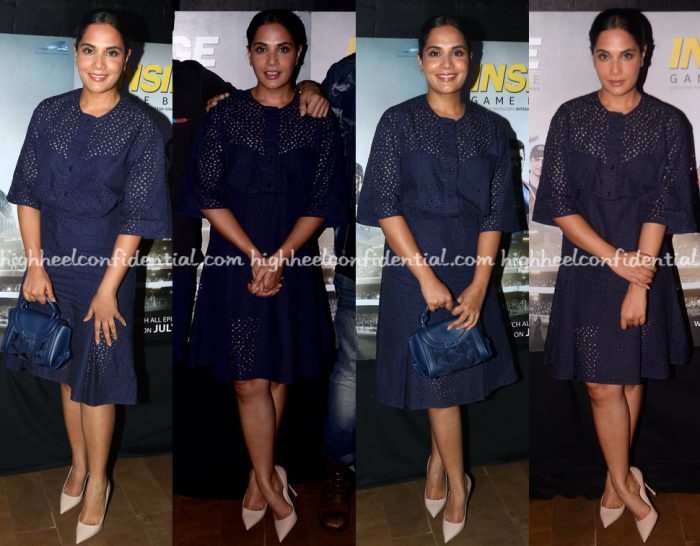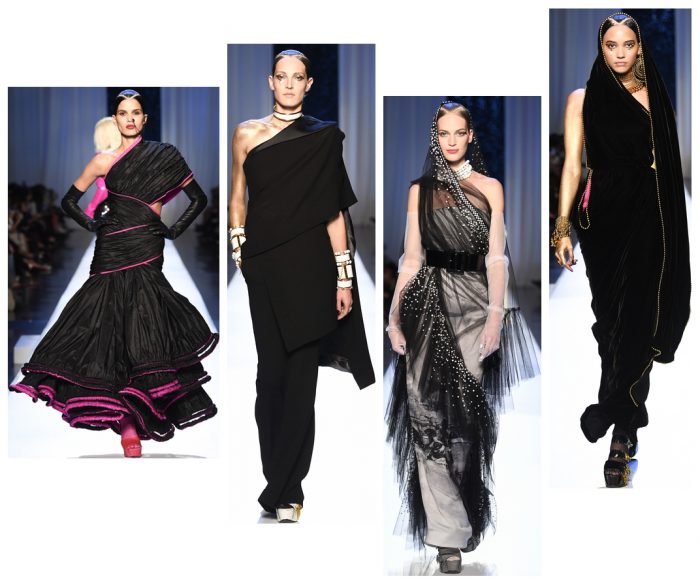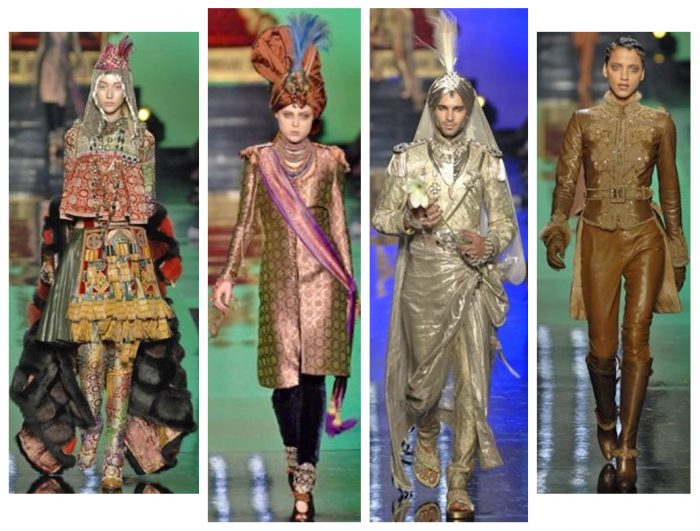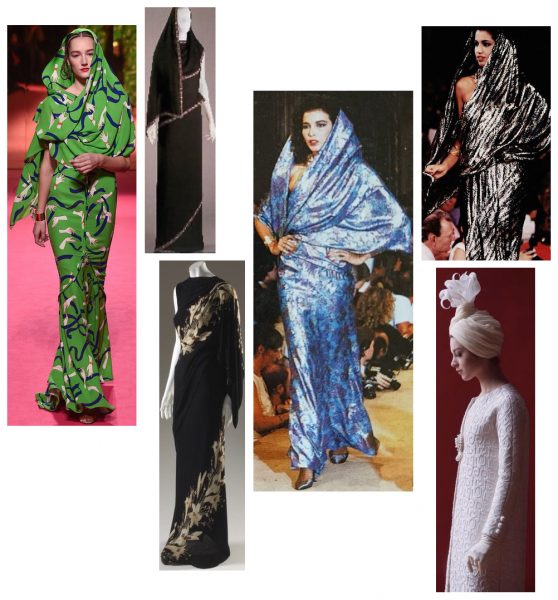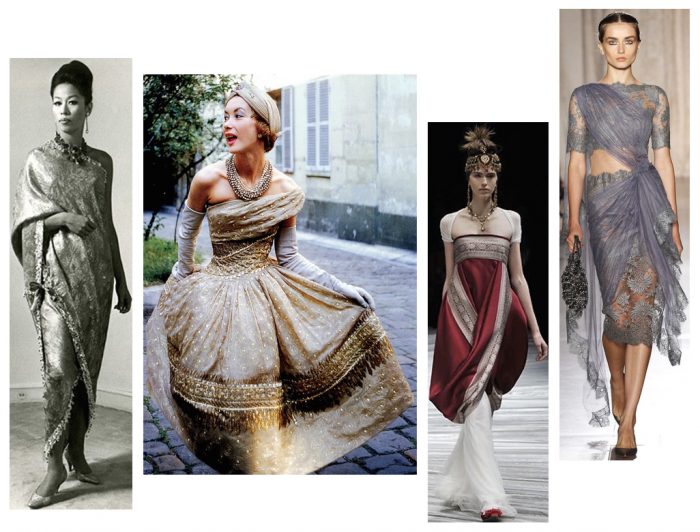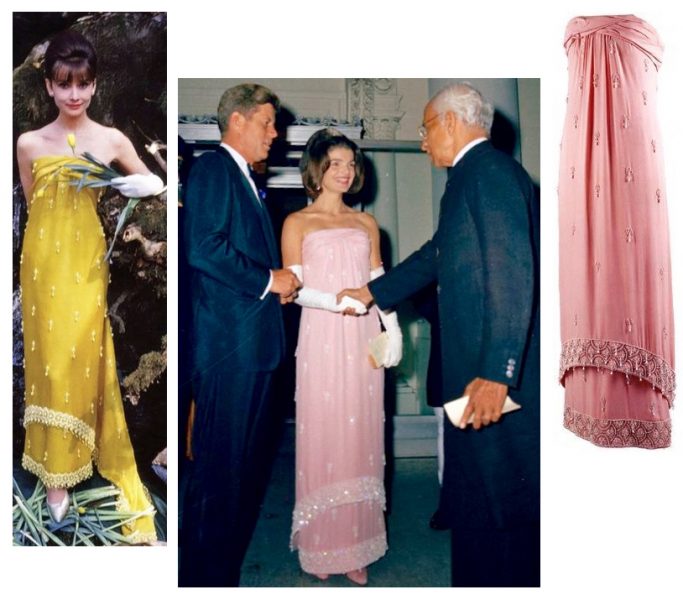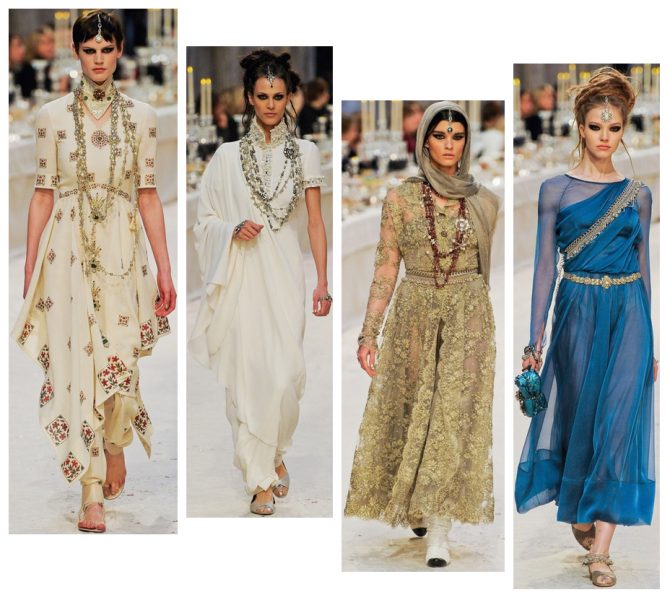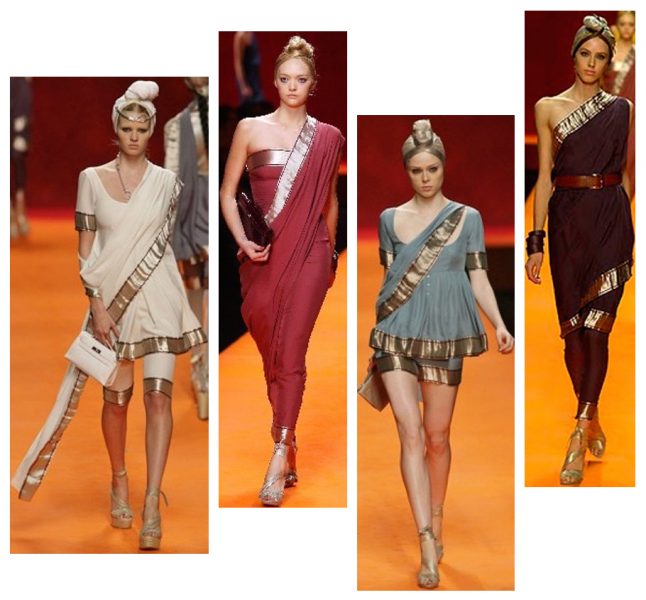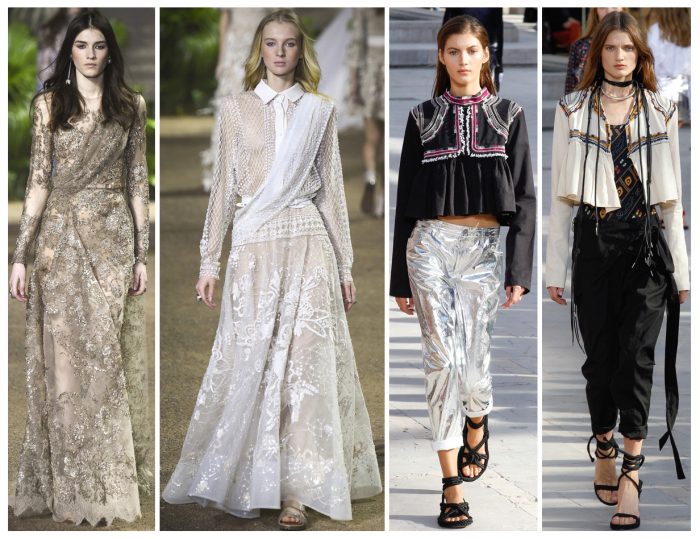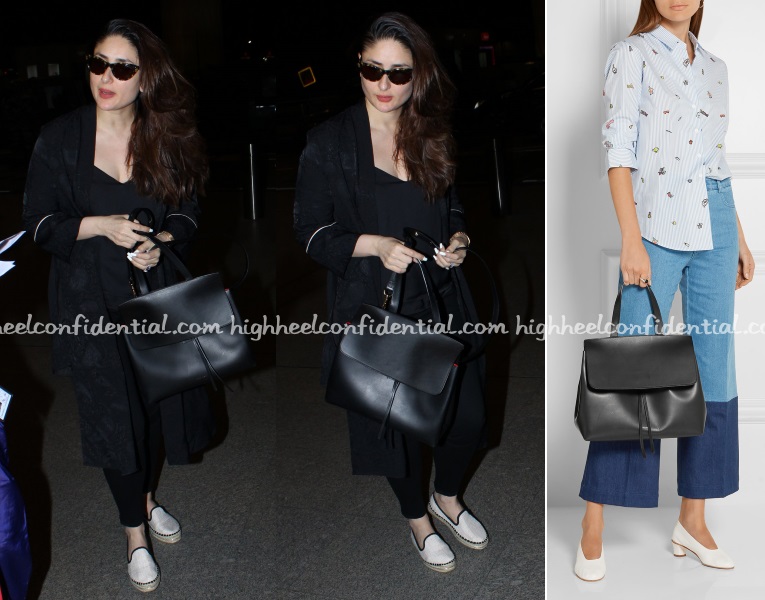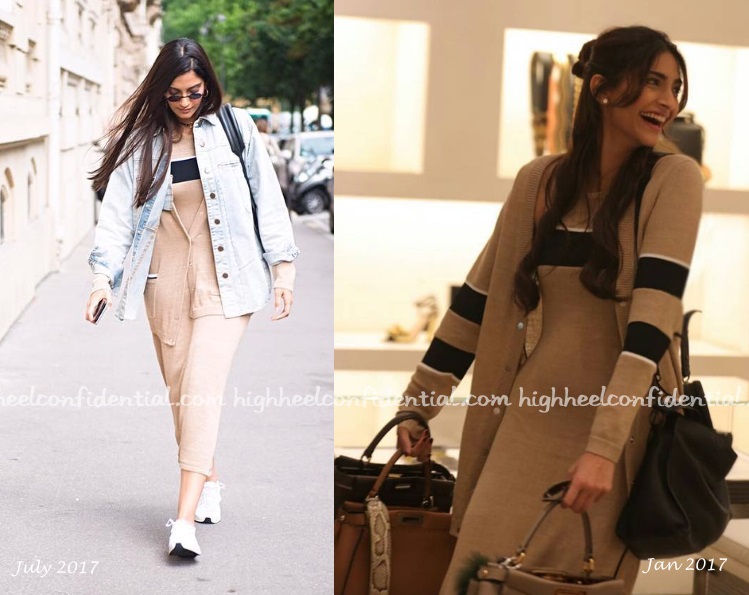I’ve been an early fan of Sanjay Garg’s sense and sensibility. The brightest of colors in his hands looked far from kitsch, and I love how the sari became lighter, truly easy breezy, all the while the traditional roots remaining intact. I still remember the day I bought my first two Raw Mango saris. It was pouring monsoon afternoon and the label had travelled to Calcutta for a trunk show.
It was love at first sight. An indigo-meets-aubergine diaphanous chanderi with ganga jamuna border in matte silver and bronze. “Remember not to put a fall. You will be able to wear the sari either border up, depending on your jewelry. And anyway, traditional saris don’t need a fall, only chiffon saris do.” I had made studious mental notes back then.
The second sari was rani pink with a lime green border. I wanted a signature Raw Mango, and in those days, that signature was a shot of lime green.
Though the saris and its sparrows are still untouched, Raw Mango has come a long way since. Sanjay Garg launched an eponymous label, he is coveted by all of Bollywood and he is a fashion week star, albeit a reluctant one! Excerpts from a chat…

DoB: 2 July, 1980
Education: Indian Institute of Crafts and Design, Jaipur and NIFT, Delhi
First Raw Mango sari designed: In 2008, exploring the chanderi textile followers by Varanasi brocades and Mashru.
Turning point: “I wanted to go abroad and continue my higher education there. However, once I started working on the Chanderi Cluster Development Programme and came in contact with the weavers, I saw no reason in traveling to the West.”
What is the story behind the name Raw Mango?
The name means many things — I love the pungent taste of raw mango, and the contrast of flavours and color. It speaks to the idea of beauty as imperfect and unripe. No one grows up in India without knowing this taste. Also, it is like the paisley motif — present across India and not identified with one particular place.
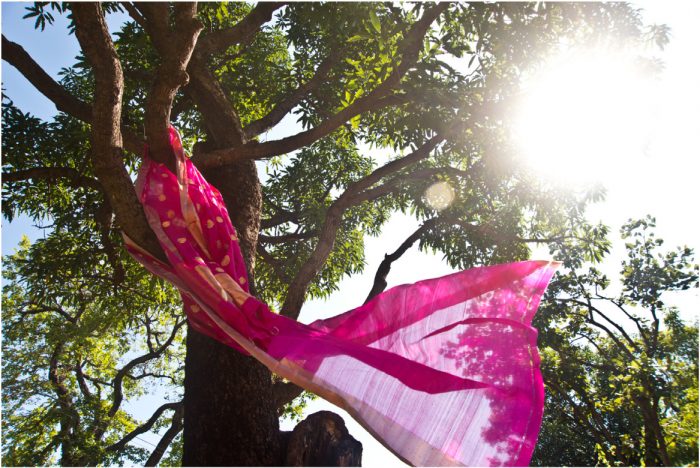
You got a whole generation to befriend the sari. Looking back, was it a conscious effort on your part or did it happen organically?
It happened organically. Of course, I wanted to change it but I’ve been fortunate that we’ve managed to organically help shift its perception.
And for the girls out there who are still intimidated by the sari, what are some tips?
The biggest tip would be to stop thinking of it as occasion wear. It is a garment that can be worn for a number of occasions including everyday. Having fun with the blouse is an easy start — I personally like it worn with a tube top/bustier. It looks like it’s worn without a blouse and is an elegant look. Experiment with the drapes, it great scope for experimentation. I think The Sari Series will help — it is a film anthology of draping styles and will be out in the Fall. It will have over 80 films showing how one can drape a sari. I’m an advisor to the project and am very excited about the possibilities this will open up.
(Psst, speaking of ‘The Sari Series’, High Heel Confidential is an associate producer of one of the films. The passion for saris is real, like you didn’t already know that. We are very excited about the project as well!)
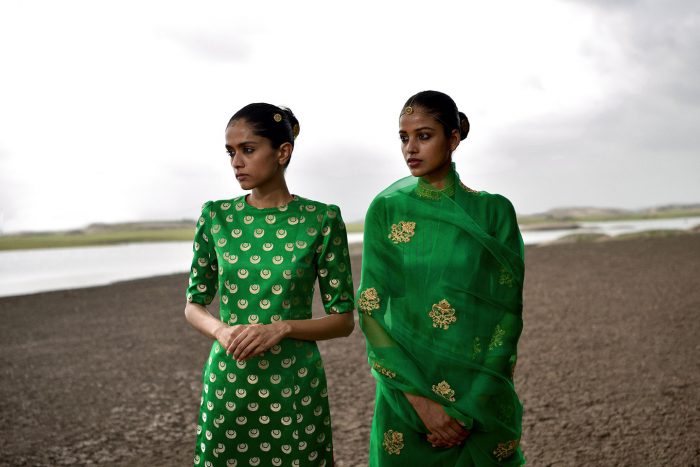
When we spoke last, you said you had a problem when people expect only kitsch from India. Do you think this perception is changing?
It has changed a lot, and in this lifetime. That’s quite drastic and incredible to see. Since we introduced our brocade lenghas, we’ve seen a shift with brides and families wanting to wear outfits without embroidery. The same was true when we started work in Chanderi — that aesthetic from years ago still holds strong today.
Where do you think Indian fashion is headed from a global standpoint?
We need to have much more meaningful understanding within India first, rather than the world. I think we are far away from making any kind of meaningful impact. The Japanese brought their wabi sabi aesthetic to the world. We need to first see what India can bring to the table. I don’t believe it is only textiles, and I think many of us are working towards this pursuit.
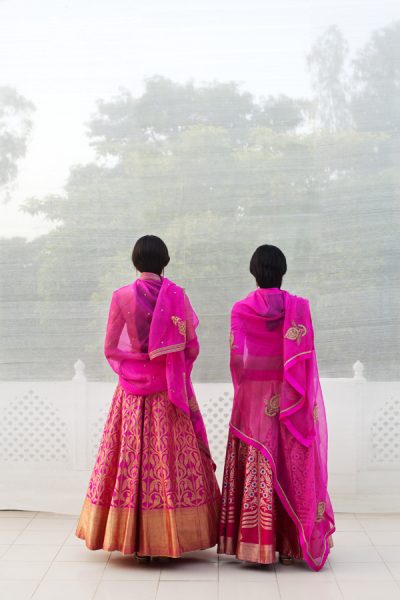
What prompted you to launch the Sanjay Garg brand? How is it different from the Raw Mango label?
Raw Mango is a sari brand, and Sanjay Garg is our line of garments (lenghas, dresses, coats and separates). The DNA is the same, the textile development process is as involved, however, the intention behind Sanjay Garg was to give occasion wear options to women when they were not wearing a sari.
Which 5 traditional weaves must every woman have in her collection?
There is nothing called ‘must’ but if you ask me, my favorites are Chanderi, Benaresi, Mashru, Jamdani and Kanjeevaram.
Finally, what’s a Sanjay-approved finishing touch to a Raw Mango look?
No jewelry and minimal make-up. I love how women naturally look.
